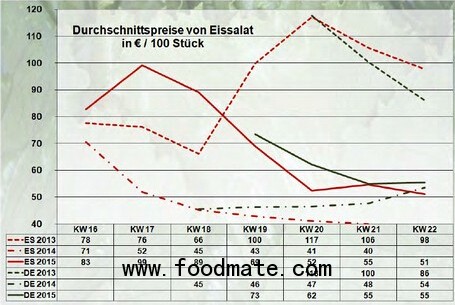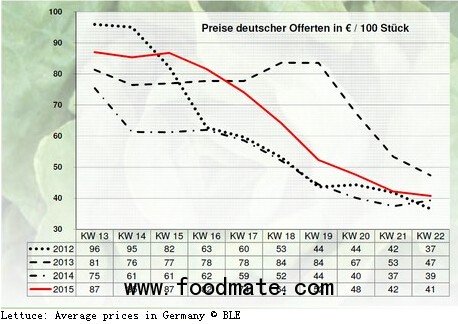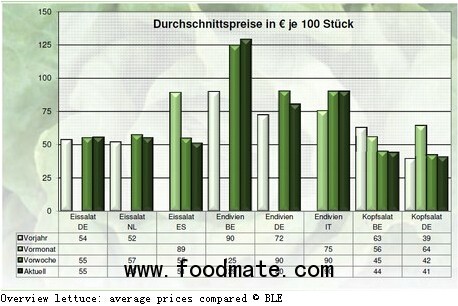
Other German grown lettuce varieties dominated the market too. Belgium and the Netherlands contributed with their own variations. On the wholesale markets, the demand was rather subdued and the prices did not change. Dealers paid on average 0.41 Euro per lettuce, and especially at the Cologne wholesale market the prices showed a downwards trend.

The supply of German mixed salads increased, yet prices due to low demand are reduced.
Fresh endive from Germany, Belgium, the Netherlands and Italy has reached the market. But the demand was not particularly high, causing prices to go down. The price for German endive dropped from 0.90 Euro to 0.80 Euro. Belgian varieties got higher prices. The prices rose from 1.25 Euro per salad to 1.29 Euro over one week.

It is evident that in general the prices for the lettuce varieties are stagnant or falling with the only exception being endives from Belgium. Since 2010, the import of lettuce has fallen from 117,159 metric tons to 88,611 metric tons in 2014. The majority of import originated from EU countries. Last year, the majority of lettuce came from Spain (49419 metric tons), Italy (15,193 metric tons), Belgium (11,086 metric tons) and the Netherlands (6,462 metric tons).





